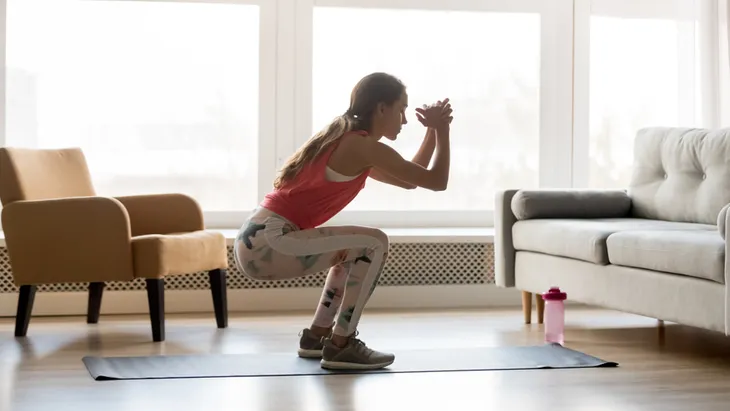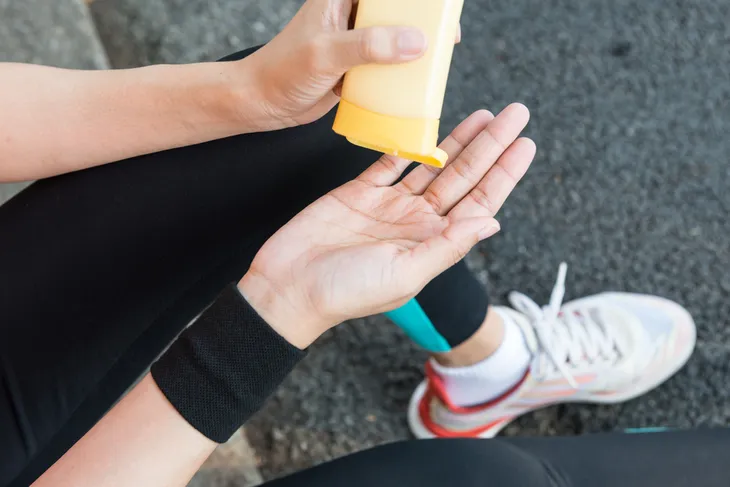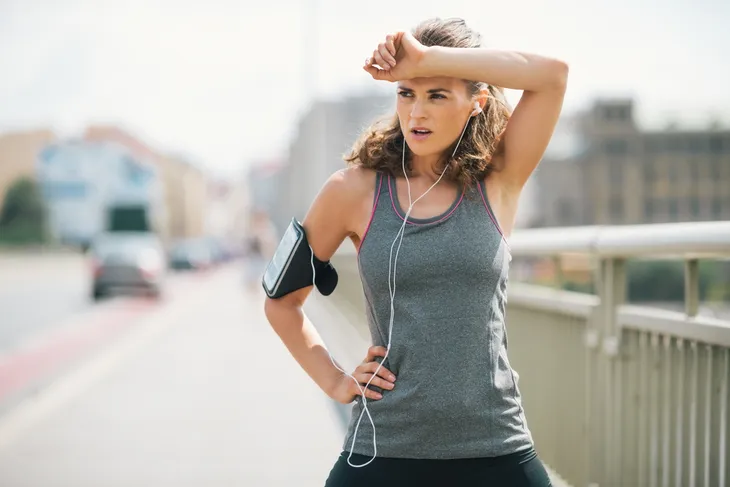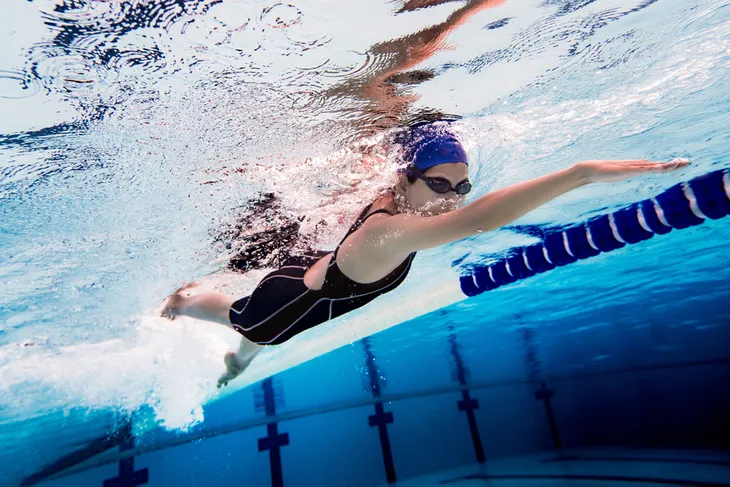After a long, cold, snowy winter, making the most of the summer often includes spending as much time outside as possible. That is, until the mercury skyrockets through the roof and the humidity makes the air feel like soup. In addition to being uncomfortable, too-hot weather can lead to heat exhaustion, heat stroke, uncomfortable cramping, and other not-so-fun effects. Don’t miss out on an invigorating summer filled with workouts—just follow these ten tips for a good (and safe!) workout during the dog days of summer.
Hit the Mall
On extremely hot days, the air conditioned bliss of the gym might be exactly what you need. If you don’t have a gym membership, you can always feel the burn at home by exercising alongside fitness DVDs.
Or try creating an at-home strength training routine, or jogging up and down the stairs (try taking them two at a time!) in your home. Feel like you have to get out of the house? Hit up your local mall for a power walk.
Make Like a Vampire—Stick to the Shade
Try to plan your activities so that your entire workout doesn’t take place in full midday sun. Seek the cooler temperatures found in the shade.
If it’s a scorcher outside, workout either under some trees in the park or take cover in the cool shade of the woods.
Do it Late… or Early
If you’re determined to get outdoors, consider being the early bird who gets the worm (and the track to themselves!), or working out like a night owl.
According to the Encyclopedia of Sports Medicine and Science, planning your outdoor workout during non-peak times will help you avoid the intense heat of midday, and can be the first step in helping you become acclimatized to the rigors of summer heat.
Keep Your Doctor in the Loop
Even if you’re an exercise regular, check in with your doctor about any prescription or over-the-counter medications you’re taking. Many of these medications promote heat storage, impair sweat glands, or increase sensitivity to sunlight.
If you take one of these medications, noted on the Laborer’s Health and Safety Fund of North America website, follow your doctor’s advice, and take extra care to monitor your body temperature while being active in hot weather.
Pick The Right Outfit
To increase your safety in the summer heat, choose light-colored clothing made of cotton, or high-tech exercise clothing. Cotton helps absorb sweat, while high-tech running shorts and shirts will wick the sweat away from your body, keeping you cooler on your run.
While you’re at it, don’t forget to protect your head and face from the harsh sun by wearing a hat, and all exposed skin should be slathered in sunscreen.
Don’t Overdo It
The middle of a heatwave is not the time to challenge your personal best goals. In fact, you may be safer if you shorten your workouts on a hot day. If you’re determined to get a full workout in, consider splitting up your routine into two or more chunks.
Another option for taking it easy in the heat: consider working out at a less intense pace for your full workout time. And don’t forget—it’s OK to take breaks.
Make a Splash
Find your neighborhood (or your neighbor’s) pool, lake, or ocean and get your workout in the water. Swimming keeps your body cool.
Plus, if you’re looking to push yourself a little, water-bound workouts feature the added bonus of making your workout appear easier.
Take a Cold Shower
We all know how great a post-workout shower feels, but that’s not what we’re talking about here. Nope. Pre-workout, hop into a cold shower to get a burst of cool all over your body.
If you leave your hair wet (and put it in a ponytail, if it’s long), the water will drip down your face and neck as you exercise, like a built in cooling system.
Hydrate, Hydrate, Hydrate!
Proper hydration will help you prevent the dizziness, cramps, and headaches that can pop up while you’re exercising in hot weather. Prevention begins well before you begin your workout—doctors from the Texas Heart Institute recommend that you drink 16 ounces of water 1-2 hours before your workout. Then, drink another 16-ounces roughly 15-minutes before you begin exercising.
During your workout, drink 5-ounces of water roughly every 10 minutes. Follow all of that up with an additional 16-ounces of water at the end of your routine. These are just general guidelines—your doctor can help you find the ideal amount of water you need to stay hydrated during your summer workouts.
Listen to Your Body
The best way to exercise safely this summer is to pay attention to your body. If you start to feel even a little bit unwell, stop your workout. Don’t push yourself if you’ve got muscle cramps, nausea, dizziness, fatigue, headache, or even confusion.
These are all signs of heat illness—and that your workout for the day is over. Treat your body kindly in heat, so you can continue your healthy lifestyle for the rest of the summer.













